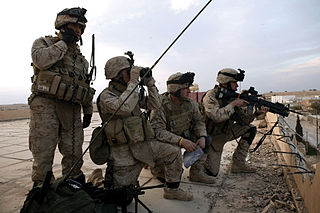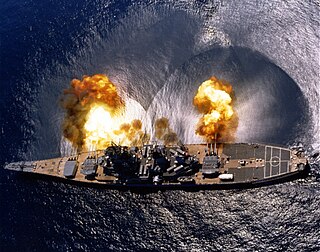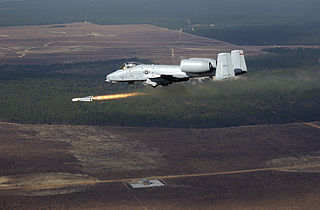
The Tactical Air Control Party, commonly abbreviated TACP, is a small team of military personnel who provide coordination between aircraft and ground forces when providing close air support.

The Tactical Air Control Party, commonly abbreviated TACP, is a small team of military personnel who provide coordination between aircraft and ground forces when providing close air support.
| | This section needs expansion. You can help by adding to it. (August 2013) |
Australian TACPs are provided by the RAAF and are responsible for the coordination of air assets in support of deployed Army units. [1]
The Royal Canadian Air Force TACP is the principal air liaison and control element aligned with land force manoeuvre units from battlegroup to corps. The primary mission of a TACP is to advise the respective ground commanders on the capabilities and limitations of air power and to assist the ground commander in planning, requesting, coordinating and controlling air effects. [2] In the Canadian Armed Forces, tactical air control parties and joint terminal attack controllers are not the same thing. A RCAF TACP operates like a coordination centre that integrates air assets into the battlespace, conducts stack management of tactical airspace, and maximizes joint fires integration. The JTAC, however, conducts target correlation and executes the terminal attack control procedures from a forward position or a command post. A TACP can coordinate and approve the airspace for an airstrike, but cannot execute the terminal attack control procedure unless they are a qualified and certified JTAC. TACPs provide strike coordination, routing safety of flight, airspace deconfliction, aerospace management, net-centric capabilities, flight advisory, maximize joint fires integration, coordinate airstrikes beyond coordinated fire line among other capabilities. The TACP is responsible to the JFACC and responsive to the designated supported commander who is usually the ground commander; two primary responsibilities: [3]
In Sep 2006, a USAF A-10A conducting CAS controlled by a Canadian JTAC strafed Canadian soldiers, killing Canadian Army Private Mark Anthony Graham and wounding several others. A Board of Inquiry was created to investigate the fratricide discovering several deficiencies in regards to JTAC training and equipment that contributed to the fratricide. Resulting from the investigation, the Air-Land Integration Cell was established in 2007 to provide national standards for JTACs, the creation of the RCAF TACPs, and adequate capability management. [4]
In the United Kingdom Armed Forces, TACP personnel may come from the Royal Marines, [5] Army or RAF Regiment. [6] Every TACP has four members; one officer and one senior NCO, who are trained Forward Air Controllers (FACs), and two signallers (junior NCOs), who are responsible for communication equipment and assist in tasking aircraft to FACs in forward positions. The FAC's role is to guide attack aircraft and fast jets to the correct target by providing descriptions and locations to the pilots via a range of telecommunications equipment. FACs and TACPs in the United Kingdom are trained at the Joint Forward Air Controller Training and Standardisation Unit (JFACTSU). [7]
Prince Harry, the fifth in line to the British throne, served as a TACP commander in Afghanistan. [8] [9]
A USAF TACP Airman (AFSC 1Z3X1) integrates and operates with a conventional United States Army combat maneuver unit or special operations unit, including Special Forces Operational Detachment Alphas (ODAs), the 75th Ranger Regiment, including the Regimental Reconnaissance Company, Navy SEAL Teams, and Joint Special Operations Command Tier 1 Special Mission Units. TACPs are responsible for advising ground commanders on the best use of air power, establishing and maintaining command and control communications, and providing precision terminal attack guidance of U.S. and coalition fixed-wing and rotary-wing close air support aircraft, artillery, and naval gunfire.
Traditional Marine Corps infantry battalions each have a Forward Air Controller (FAC), who is a Marine Corps Naval Aviator or Naval Flight Officer acting liaison between their fighter/attack jets and/or attack helicopters and the infantry battalion. A Marine Corps FAC (7502 MOS) is commonly referred to as the Air Officer. Underneath him, he has two other FACs and three Joint Terminal Attack Controllers (JTACs – 8002 MOS). Ideally the three FACs (including the Air Officer) come from three different aviation backgrounds: one tactical jet pilot or NFO (F/A-18 or AV-8B), one tactical helicopter pilot (AH-1W or UH-1Y), and one assault support pilot (CH-46, CH-53, KC-130 or MV-22). Ideally, the three JTACs come from an artillery background (Forward Observer – 0861 MOS).
In addition to the three FACs and three JTACs, the infantry battalion also has eight Joint Fires Observers (JFOs) distributed among the rifle companies.
The USMC has three active duty ANGLICO units with the sole purpose to provide a fires liaison capability to Joint, Coalition, and Allied partner nations. This capability is scale-able from a small team to the division level. The smallest unit of an ANGLICO unit is a 4-5 Marine Firepower Control Team (FCT) composed of an Officer Team Leader/JTAC, a Team Chief (Forward Observer/JFO/JTAC), and a Radio Chief (Radio Operator) with the rest of the team being a mix of FO/ROs. These teams can be tailored to meet the mission requirement, from just a JTAC attached to a small team to all 5 Marines dispersed among a company-sized element for distributed fires lethality via communication. Because of the large number of units these teams work with they are usually experienced in working with various US and international CAS aircraft in all environments ranging from the jungles of south east Asia, Middle East to the Arctic Circle.

North American Aerospace Defense Command, known until March 1981 as the North American Air Defense Command, is a combined organization of the United States and Canada that provides aerospace warning, air sovereignty, and protection for Canada and the continental United States.

In military tactics, close air support (CAS) is defined as aerial warfare actions—often air-to-ground actions such as strafes or airstrikes—by military aircraft against hostile targets in close proximity to friendly forces. A form of fire support, CAS requires detailed integration of each air mission with fire and movement of all forces involved. CAS may be conducted using aerial bombs, glide bombs, missiles, rockets, autocannons, machine guns, and even directed-energy weapons such as lasers.

An artillery observer, artillery spotter, or forward observer (FO) is a soldier responsible for directing artillery and mortar fire support onto a target. An artillery observer usually accompanies a tank or infantry unit. Spotters ensure that indirect fire hits targets which those at a fire support base cannot see.

Forward air control is the provision of guidance to close air support (CAS) aircraft intended to ensure that their attack hits the intended target and does not injure friendly troops. This task is carried out by a forward air controller (FAC).

Joint Terminal Attack Controller (JTAC) is the term used in the United States Armed Forces and some other military forces for a qualified service member who directs the action of military aircraft engaged in close air support and other offensive air operations from a forward position. The term that is used in most other countries, as well as previously in the U.S. and in the relevant NATO standard, is Forward Air Controller. The term became effective in the U.S. on September 3, 2003 with the publishing of Joint Publication (JP) 3-09.3 Close Air Support.

Air Naval Gunfire Liaison Company (ANGLICO) is an airborne fire support and liaison unit of the United States Marine Corps. The mission of ANGLICO is "To provide Marine Air-Ground Task Force (MAGTF) Commanders a liaison capability to plan, coordinate, and conduct terminal control of fires in support of joint, allied, and coalition forces. Per this mission statement, ANGLICOs are not designed to support U.S. Marine Corps maneuver elements. Instead, the doctrinal purpose of ANGLICO is to provide fire support and coordination in support of units adjacent to the MAGTF.

No. 4 Squadron is a Royal Australian Air Force squadron composed of the air force special forces Combat Controllers, aircrew who operate the Pilatus PC-21 aircraft and instructors for the Australian Defence Force Joint Terminal Attack Controller (JTAC) course.

The Naval Gunfire Liaison Officer (NGLO) is a U.S. Navy officer who assists infantry personnel requiring naval gunfire support. The mission was defined during World War II amphibious warfare, and these personnel remain an important coordination point for effective utilization of naval guns by troops ashore.

The 6147th Tactical Control Group was a United States Air Force unit that fought in the Korean War. The unit was attached to Far East Air Forces Fifth Air Force
The Joint Rescue Coordination Centre Victoria (JRCC Victoria) is a rescue coordination centre operated by the 1 Canadian Air Division (Canadian Armed Forces) and staffed by personnel of the Royal Canadian Air Force (RCAF) and the Canadian Coast Guard (CCG).

Persistent Close Air Support (PCAS) is a DARPA program that seeks to demonstrate dramatic improvements in close air support (CAS) capabilities by developing a system to allow continuous CAS availability and lethality to Joint Terminal Attack Controllers (JTACs).

A United States Air Force Tactical Air Control Party, commonly abbreviated TACP, is an individual or team of United States Air Force Special Warfare Airmen with AFSC 1Z3X1, who are aligned with conventional, Special Operation Forces, and Tier 1 combat maneuver units. They provide precision terminal attack control and terminal attack guidance of U.S. and coalition fixed- and rotary-wing close air support aircraft, artillery, and naval gunfire; establish and maintain command and control (C2) communications; and advise ground commanders on the best use of air power.
Forward observers in the U.S. military are artillery observers who carry the Military Occupational Specialty designator of 13F in the United States Army and 0861 in the United States Marine Corps. They are officially called Joint Fire Support Specialists in the U.S. Army and Fire Support Marines in the U.S. Marine Corps. They are colloquially known as FiSTers, regardless of whether they are members of a FiST. The Battalion Fire Support Officer (FSO) is the Officer in Charge of a Battalion Fire Support Element.

Draken International, LLC is an American provider of tactical fighter aircraft for contract air services including military and defense industry customers. The firm is based at the Lakeland Linder International Airport in Lakeland, Florida and also has an operating base at Nellis Air Force Base, Nevada.

AN/PRC 113 Radio Set is a manpack, portable VHF and UHF AM combat radio transceiver manufactured by Magnavox America. In the Joint Electronics Type Designation System (JETDS), AN/PRC translates to "Army/Navy, Portable, Radio, Communication.

The United States Air Force's 274th Air Support Operations Squadron is a combat support unit located at Hancock Field Air National Guard Base, Syracuse, New York. The 274th provides tactical command and control of air power assets to the Joint Forces Air Component Commander and Joint Forces Land Component Commander for combat operations.
Forward air controllers in the Korean War were prominent throughout the conflict. United Nations forces depended upon improvised U.S. forward air control systems. The United States military held two competing doctrines for directing close air support (CAS). The U.S. Marine Corps' system depended on an organic supporting air wing delivering ordnance within 1,000 yards of front-line troops; this was to compensate for their weakness in artillery caused by being an amphibious force. On the other hand, the U.S. Army believed close air support should extend the range of its own organic artillery; it also wanted its own air corps. However, the U.S. Air Force was tasked with supplying trained fighter pilots as forward air controllers (FACs), with the Army supplying equipment and personnel. As events fell out, the 1st Marine Air Wing supplied the FACs and air strikes for X Corps during the war, while 5th Air Force supplied FACs and strike support to 8th Army. There were awkward attempts at coordination between the two, and with carrier-borne air power, though with limited success.

The Joint Deployable Analysis Team (JDAT) is part of the J6 Directorate of the Joint Chiefs of Staff.

The 165th Air Support Operations Squadron is a combat support and geographically separated unit of the 165th Airlift Wing (AW) in the Georgia Air National Guard. The 165 ASOS is located at Savannah-Hilton Head International Airport, in the U.S. state of Georgia. The 165 ASOS falls under jurisdiction of Air Combat Command (ACC) along with other Tactical Air Control Party (TACP) squadrons, whereas the 165 AW falls under the jurisdiction of Air Mobility Command. The 165 ASOS provides TACP members; Air Liaison Officer (ALO) members; Intelligence, Surveillance, and Reconnaissance Liaison Officer (ISRLO) members; and support personnel to aligned units in support of combat operations.